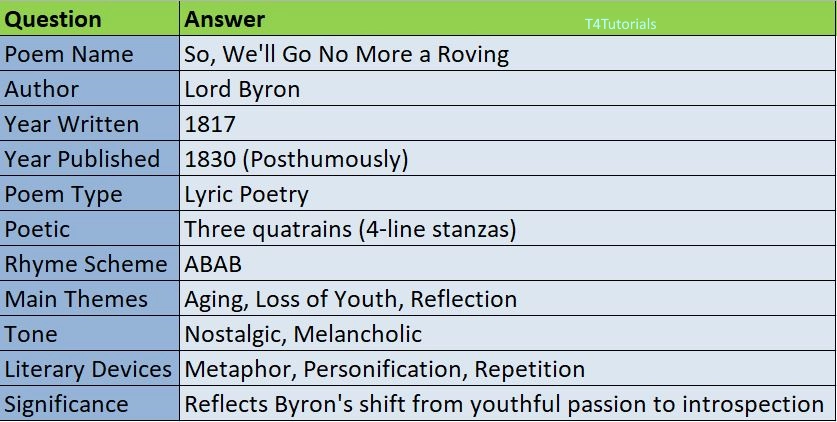Summary:
“So, We’ll Go No More a Roving” is a short but deeply reflective poem by Lord Byron, written in 1817 during his stay in Venice and later published in 1830 after his death. The poem explores themes of aging, fatigue, and the passage of time, suggesting that the youthful days of endless wandering and pleasure must come to an end. Byron uses the metaphor of “roving” (wandering or partying) to represent the carefree and passionate lifestyle of youth. However, he acknowledges that the heart and soul, like the moon in the sky, need rest and renewal. Despite the desire to continue, the weariness of the body and spirit forces a pause. The poem is composed of three quatrains (four-line stanzas) with an ABAB rhyme scheme, which gives it a lyrical and musical quality. The tone is nostalgic and melancholic, reflecting a moment of self-realization that even the most passionate pursuits must eventually slow down.
10
Score: 0
Attempted: 0/10
Subscribe
| Question | Answer |
| Poem Name | So, We’ll Go No More a Roving |
| Author | Lord Byron |
| Year Written | 1817 |
| Year Published | 1830 (Posthumously) |
| Poem Type | Lyric Poetry |
| Poetic Structure | Three quatrains (4-line stanzas) |
| Rhyme Scheme | ABAB |
| Main Themes | Aging, Loss of Youth, Reflection |
| Tone | Nostalgic, Melancholic |
| Literary Devices | Metaphor, Personification, Repetition |
| Significance | Reflects Byron’s shift from youthful passion to introspection |